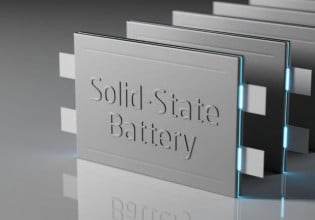Despite a number of signs indicating a possible global economic slowdown, the outlook for the Worldwide Battery Pack market is expected to remain strong, according to Darnell Group’s latest analysis. The International Monetary Fund (IMF) projects the world economy will grow by 4.9% in 2008, with some of the strongest growth coming from the Asian region. This growth will have a positive effect on the consumer market and will contribute to the expansion of the market for rechargeable batteries in 2008.
Given this strong consumer demand, the Worldwide Power Pack market for portable electronics is projected to grow from 1.9 billion units in 2008 to 3.1 billion units in 2013, a compounded annual growth rate (CAGR) of 10.6%. The worldwide dollar market is expected to increase at a somewhat slower CAGR of 6.2%, growing from $7.9 billion in 2008 to $10.7 billion in 2013.
Li-ion has the largest unit market share with 87.9 % in 2008. Due to its high energy density, lightness and environmental friendliness, Li-ion batteries are expected to continue gaining market share from NiMH and NiCd batteries throughout the forecast period. By 2013, Li-ion will hold 90.5 % of the unit market. Its unit market will grow from 1.6 billion units in 2008 to 2.8 billion units in 2013, a CAGR of 11.2%.
Since 2005, the prices of Li-ion cells have decreased 12%-40%, depending on application. Although the market is shrinking, there is also a continued use of NiCd and NiMH batteries in high-volume applications such as power tools and cordless phones. The prices for these chemistries have also dropped, from 10% to 15%.
Today, the prices of cylindrical Li-ion cells are very close to those of NiMH cells, while prismatic Li-ion prices have stayed relatively high, competing with Li-polymer prices. In 2008, prismatic Li-ion prices are expected to a 35% premium over their cylindrical counterpart.
Due to the continued expansion of lithium batteries in a growing number of applications, NiMH batteries will continue to lose significant market share in those devices that require higher energy densities. From 2008 to 2013, the unit market for NIMH battery packs will grow at a much slower rate than Li-ion, a CAGR of 4.3%. The unit market share for NiMH batteries will decline, falling from 4.1% in 2008 to 3.0% in 2013.
For portable applications such as camcorders, digital cameras, mobile phones and notebook computers, NiMH batteries only remain in use with lower-end products that are more price sensitive. However, due to improvements in technology, the high power drainage in NiMH batteries has been improved to enable NiMH to gain market share from NiCd in power tools, cordless phones, and two-way radios.
Complete information on Darnell Group’s analysis of the markets for rechargeable batteries is available here.






